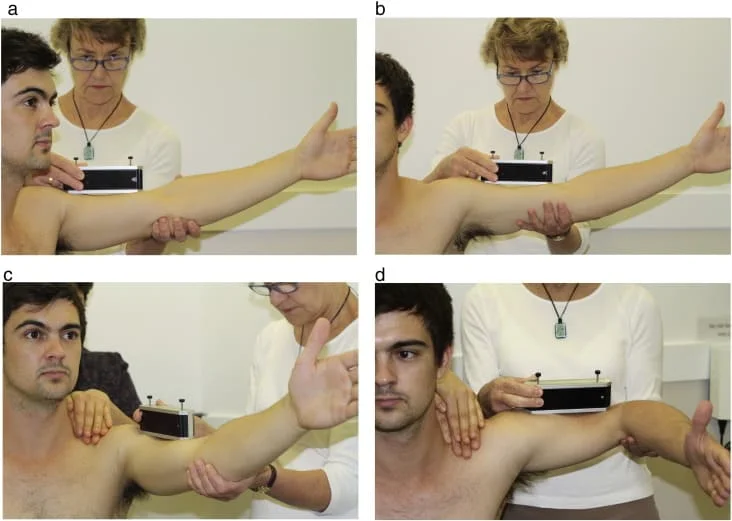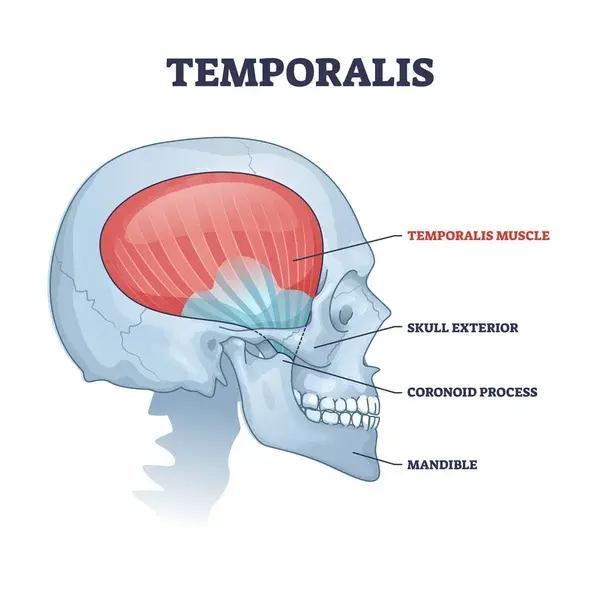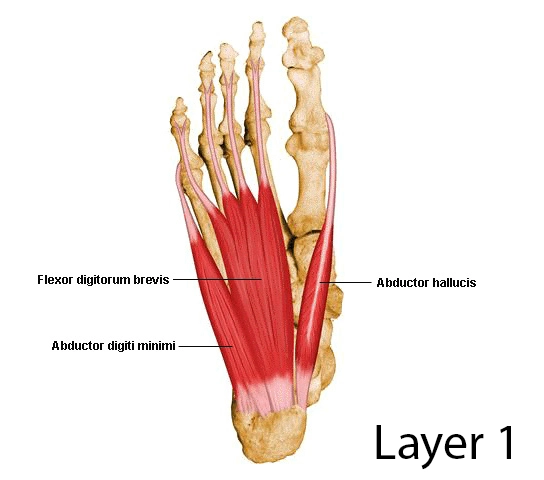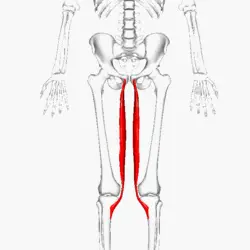Shoulder Passive Range of Motion (Shoulder PROM)
Shoulder Passive Range of Motion (Shoulder PROM)
Shoulder passive range of motion refers to the movement of the shoulder joint when an external force or another person moves the arm without the individual using their own muscles. It is often assessed during physical examinations to evaluate the flexibility, mobility, and integrity of the shoulder joint and surrounding structures. Passive range of motion tests can help identify potential injuries, joint restrictions, or other abnormalities in the shoulder.
There are several key movements that are typically assessed during a shoulder passive range of motion examination:
- Flexion: The arm is moved forward and upward, typically reaching above the head.
- Extension: The arm is moved backward, away from the body.
- Abduction: The arm is moved out to the side, away from the midline of the body.
- Adduction: The arm is moved back to the side, toward the midline of the body.
- Internal Rotation: The arm is rotated inward as if reaching for the lower back.
- External Rotation: The arm is rotated outward, away from the body.
During the examination, the examiner gently moves the individual’s arm through these movements to determine if there are any restrictions or discomfort. It is essential to perform the examination carefully and with adequate support to avoid causing any additional injury or discomfort to the patient.
It’s important to note that passive range of motion assessments are just one aspect of a comprehensive shoulder examination. Active range of motion (when the individual moves the arm on their own), strength tests, and other clinical assessments may also be conducted to get a complete understanding of the shoulder’s health and function. If you have any concerns about your shoulder or are experiencing pain or limitations in movement, it is best to consult with a qualified healthcare professional, such as a physical therapist or orthopedic specialist, for a proper evaluation and personalized treatment plan.
Assessment of Shoulder Passive Range of Motion
Assessing shoulder’s passive range of motion involves carefully evaluating the mobility and flexibility of the shoulder joint while the individual’s arm is moved by an external force or another person. Here’s a step-by-step guide on how to perform a basic assessment of shoulder’s passive range of motion:
Preparation:
Create a comfortable environment: Ensure that the person being assessed is in a comfortable position, such as sitting or lying down, with adequate support for their head and neck.
Expose the shoulder: Make sure the shoulder being assessed is accessible, and the person’s clothing allows for easy movement of the arm.
Assessment Procedure:
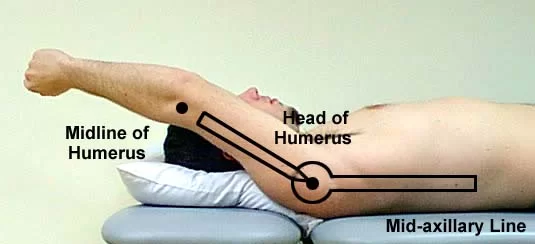
Flexion:
Stand or sit in front of the person being assessed.
Gently grasp their forearm, just above the wrist, and support their arm.
Slowly lift their arm forward and upward, allowing the shoulder to flex. Continue until you feel a gentle stretch or resistance.
Note the range of motion achieved and any signs of discomfort or pain.
Extension:
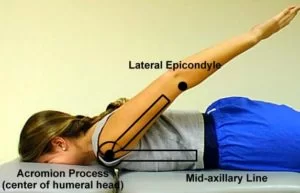
Similar to flexion, grasp the forearm and support the arm.
Move the person’s arm backward, away from the body, allowing the shoulder to extend.
Again, observe the range of motion and any signs of discomfort.
Abduction:
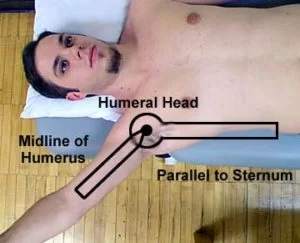
Position yourself at the person’s side.
Hold their arm near the wrist and lift it away from their body to the side.
Observe the movement and any restrictions or discomfort.
Adduction:
Starting from the abducted position, slowly bring the arm back down to the side.
Note the range of motion and any issues that may arise during this movement.
Internal Rotation:
Stand behind the person and gently grasp their forearm at the wrist.
Rotate their arm inward, as if they are trying to reach for their lower back.
Pay attention to the range of motion and any resistance or pain.
External Rotation:
Remain behind the person and support their arm at the wrist.
Rotate their arm outward, away from the body.
Observe the external rotation range of motion and any discomfort experienced.
During the assessment, it is essential to communicate with the person being assessed and be attentive to any signs of discomfort or pain. If you notice any limitations in range of motion or if the person experiences pain during the assessment, it is advisable to stop the examination and refer them to a healthcare professional for further evaluation.
Keep in mind that this is a basic guide for assessing the shoulder’s passive range of motion and is not a substitute for a comprehensive evaluation by a qualified healthcare provider. Healthcare professionals, such as physical therapists or orthopedic specialists, may use additional techniques and tests to assess shoulder function fully.
Shoulder PROM Normal Range of Motion
The normal range of shoulder passive range of motion can vary slightly between individuals due to factors such as age, gender, and body size. However, generally speaking, the normal ranges for the shoulder passive range of motion are as follows:
Flexion: 160-180 degrees
The arm can be raised forward and upward, reaching close to or above the head.
Extension: 50-60 degrees
The arm can be moved backward, away from the body, to about a right angle with the torso.
Abduction: 170-180 degrees
The arm can be raised out to the side, away from the body, to nearly parallel with the ground.
Adduction: 30-50 degrees
The arm can be brought back down to the side, close to the body, typically reaching about a right angle with the torso.
Internal Rotation: 70-90 degrees
The arm can be rotated inward, allowing the hand to reach toward the lower back or waist.
External Rotation: 80-90 degrees
The arm can be rotated outward, away from the body, with the hand moving behind the head or neck.
It is important to note that these ranges are approximate and can vary based on individual differences. Also, the ranges may be influenced by factors such as age, previous injuries, and overall joint health.
If there are significant differences from these normal ranges or if there is pain, stiffness, or any other concerns related to shoulder motion, it is advisable to consult with a healthcare professional, such as a physical therapist or orthopedic specialist, for a more detailed evaluation and appropriate management. They can provide tailored advice and treatment based on the specific needs of the individual.
Shoulder Passive Range of Motion Exercises
Passive range of motion exercises for the shoulder are designed to improve joint mobility, flexibility, and reduce stiffness. These exercises involve an external force, such as a partner or therapist, moving the individual’s arm through its range of motion without the individual actively using their own muscles. These exercises can be particularly helpful for individuals with shoulder injuries, post-surgery rehabilitation, or those experiencing limited mobility due to various conditions. It’s important to note that passive range of motion exercises should be performed gently and within the individual’s comfort level to avoid causing any additional injury or pain. Here are some common shoulder passive range of motion exercises:
Pendulum Swing:

Stand or sit, allowing the arm to hang down toward the floor.
Using a gentle swinging motion, move the arm in small circles clockwise and counterclockwise.
Perform the exercise for a specified duration or number of repetitions.
Shoulder Flexion:
Support the person’s forearm just above the wrist and slowly lift their arm forward and upward, as if reaching overhead.
In a controlled manner, bring the arm back down to the beginning position.
Repeat for the desired number of repetitions.
Shoulder Extension:
Position yourself behind the person and gently support their forearm.
Slowly move their arm backward, away from the body, allowing the shoulder to extend.
Return the arm to the starting position in a controlled manner.
Repeat the exercise as many times as you’d like.
Shoulder Abduction:
Stand or sit at the person’s side and gently lift their arm out to the side, away from the body.
In a controlled manner, bring the arm back down to the beginning position.
Repeat for the desired number of repetitions.
Shoulder Adduction:
Starting from the abducted position, slowly bring the person’s arm back down to the side, close to the body.
Repeat the exercise as many times as you’d like.
Shoulder Internal and External Rotation:
Support the person’s forearm at the wrist and gently rotate their arm inward (internal rotation) and outward (external rotation).
Repeat for the desired number of repetitions.
Remember that these exercises should be performed gently and without forcing the joint beyond its comfortable range of motion. If the person experiences pain or discomfort during any of these exercises, stop immediately and consult a healthcare professional for further evaluation.
Passive range of motion exercises are often just one part of a comprehensive shoulder rehabilitation program. For more targeted and personalized exercises, it is best to consult with a physical therapist or healthcare provider to create a safe and effective exercise plan based on individual needs and condition.

